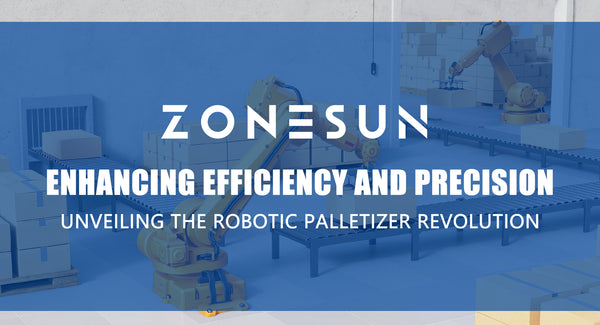
Enhancing Efficiency and Precision: Unveiling the Robotic Palletizer Revolution
In the realm of modern logistics, the robotic palletizer stands as a beacon of innovation, revolutionizing the way goods are sorted, organized, and shipped. But what exactly is a robotic palletizer?
1. What is a robotic palletizer?
A robotic palletizer is an automated system that arranges products onto pallets in a predefined pattern with precision and efficiency. These machines are equipped with advanced robotic arms that can handle various shapes, sizes, and weights of products, offering a versatile solution for the packaging industry.
2. Advantages of robotic palletizer
The advantages of employing a robotic palletizer are manifold. These systems significantly enhance operational efficiency by reducing manual labor, minimizing errors, and optimizing the stacking process. They also improve workplace safety by eliminating the need for workers to perform repetitive and strenuous tasks.
3. Applications of robotic palletizer
Robotic palletizers find applications across a wide range of industries, including food and beverage, pharmaceuticals, manufacturing, and logistics. From stacking boxes and cartons to handling bags and containers, these versatile machines can streamline the palletizing process in diverse settings.

4. 6 Key Elements of palletizer
When delving into the key elements of a palletizer, several critical components stand out:
- Robotic Arms: The core of the system, these arms are responsible for picking, moving, and placing products with precision.
- Sensors: These devices enable the robot to detect objects, adjust its movements, and ensure accurate placement.
- Control System: The brain behind the operation, the control system coordinates the robot's actions and optimizes palletizing sequences.
- End-of-Arm Tooling: Customized grippers or tools attached to the robotic arms facilitate the handling of different types of products.
- Safety Features: Built-in safety mechanisms ensure the protection of both the machine and human operators.
- Integration Capabilities: The ability to seamlessly integrate with existing production lines and software systems enhances overall workflow efficiency.

5. Future Trends and Innovations
The evolution of robotic palletizers continues to unfold, with advancements in artificial intelligence, machine learning, and collaborative robotics shaping the future of palletizing technology. Enhanced flexibility, increased payload capacities, and improved connectivity are among the key trends driving innovation in this space.
In conclusion, the adoption of robotic palletizers represents a paradigm shift in the world of logistics, offering a blend of precision, speed, and reliability that traditional methods cannot match. As industries continue to embrace automation and smart technologies, the role of robotic palletizers is set to expand, heralding a new era of efficiency and productivity in the packaging and warehousing landscape.

